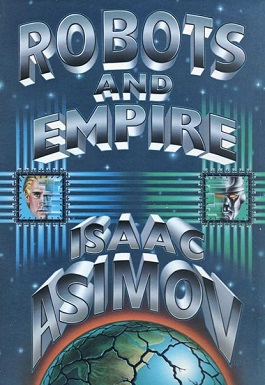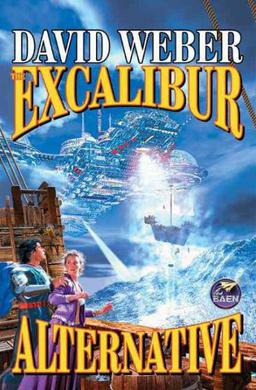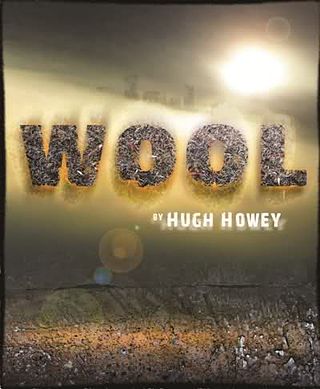Plot summary
Alexander Johannison, a nuclear physicist working at the United States Atomic Energy Commission, is mystified when his Geiger counter starts failing to detect radioactivity. Over a period of time, his colleagues also notice the same strange events, but when he finally reports them to his boss, no one will take him seriously, and he realises that he is the only one who is still aware of the existence of radioactivity.
Thinking that maybe an enemy has removed all knowledge of nuclear energy and nuclear weapons and is about to invade the United States, he goes home and finds a stranger there talking to his wife. The stranger, who looks like an impossibly perfect human, explains that he is an entity from 'outside the universe'. He has been assigned to perform an 'operation' on humanity to save them from a potential nuclear holocaust. As part of the operation, all knowledge of radioactivity has been removed from humanity for five years. Also, all radioactive elements no longer exist. After the pause, about one hundred people, including Johannison, will have the task of re-educating humanity in the peaceful use of nuclear power.
The story ends on a sinister note, as, in discussing the visit with his wife, Johannison points out that the visitor at one point referred to the Earth as "the yard", mistakenly using its own context in the reference rather than ours. Johannison concludes that it regards the Earth as a "barnyard" and humans as mere cattle who have to be controlled.
"Blowups Happen" is a 1940 science fiction short story by American writer Robert A. Heinlein. It is one of two stories in which Heinlein, using only public knowledge of nuclear fission, anticipated the actual development of nuclear technology a few years later. The other story is "Solution Unsatisfactory", which is concerned with a nuclear weapon, although it is only a radiological "dirty bomb", not a nuclear explosive device.

Apocalyptic and post-apocalyptic fiction is a subgenre of science fiction in which the Earth's civilization is collapsing or has collapsed. The apocalypse event may be climatic, such as runaway climate change; astronomical, such as an impact event; destructive, such as nuclear holocaust or resource depletion; medical, such as a pandemic, whether natural or human-caused; end time, such as the Last Judgment, Second Coming or Ragnarök; or any other scenario in which the outcome is apocalyptic, such as a zombie apocalypse, cybernetic revolt, technological singularity, dysgenics or alien invasion.

The Atomic Age, also known as the Atomic Era, is the period of history following the detonation of the first nuclear weapon, The Gadget at the Trinity test in New Mexico, on 16 July 1945, during World War II. Although nuclear chain reactions had been hypothesized in 1933 and the first artificial self-sustaining nuclear chain reaction had taken place in December 1942, the Trinity test and the ensuing bombings of Hiroshima and Nagasaki that ended World War II represented the first large-scale use of nuclear technology and ushered in profound changes in sociopolitical thinking and the course of technological development.

Robots and Empire is a science fiction novel by the American author Isaac Asimov, published by Doubleday Books in 1985. It is part of Asimov's Robot series, which consists of many short stories and five novels.

Hackers is an anthology of science fiction short stories edited by Jack Dann and Gardner Dozois. It was first published in 1996. It contains stories by science fiction and cyberpunk writers of the late 1980s and early 1990s about hackers.

The Phantom Stranger is a superhero appearing in American comic books published by DC Comics, of unspecified paranormal origins, who battles mysterious and occult forces, sometimes under their Vertigo imprint. The character first appeared in an eponymous comics anthology published in August/September 1952.

To Your Scattered Bodies Go (1971) is a science fiction novel by American writer Philip José Farmer, the first book in the Riverworld series. It won a Hugo Award for Best Novel in 1972 at the 30th Worldcon. The title is derived from the 7th of the "Holy Sonnets" by English poet John Donne:
At the round earth's imagin'd corners, blow
Your trumpets, angels, and arise, arise
From death, you numberless infinities
Of souls, and to your scattered bodies go

"The Defenders" is a 1953 science fiction novelette by American author Philip K. Dick, and the basis for Dick's 1964 novel The Penultimate Truth. It is one of several of his stories to be expanded into a novel. The story was first published in the January 1953 issue of Galaxy Science Fiction.
The Eight Worlds are the fictional setting of a series of science fiction novels and short stories by John Varley, in which the Solar System has been colonized by human refugees fleeing an alien invasion of the Earth. Earth and Jupiter are off-limits to humanity, but Earth's Moon and the other worlds and moons of the Solar System have all become heavily populated. There are also minor colonies set in the Oort cloud at the edge of the Solar System. Faster than light travel is not possible, though it is mentioned that test-flights will begin soon at the end of The Golden Globe, and the species has not as yet managed to extend itself to other stars.

Environmental radioactivity is produced by radioactive materials in the human environment. While some radioisotopes, such as strontium-90 (90Sr) and technetium-99 (99Tc), are only found on Earth as a result of human activity, and some, like potassium-40 (40K), are only present due to natural processes, a few isotopes, e.g. tritium (3H), result from both natural processes and human activities. The concentration and location of some natural isotopes, particularly uranium-238 (238U), can be affected by human activity.

Promethean: The Created is a role-playing game published by White Wolf, set in the Chronicles of Darkness setting.

The Collected Stories of Vernor Vinge is a collection of science fiction short stories by American writer Vernor Vinge. The stories were first published from 1966 to 2001, and the book contains all of Vinge's published short stories from that period except "True Names" and "Grimm's Story".

The Excalibur Alternative is a science fiction novel by American writer David Weber, published by Baen Books in 2002. It is one of several novels based on the premise of David Drake's 1986 novel Ranks of Bronze. This novel is based on the short story "Sir George and the Dragon", which appeared in the 2001 anthology Foreign Legions.

Midas World is a collection of science fiction short stories by American writer Frederik Pohl, published in 1983.

Brain Wave is a science fiction novel by American writer Poul Anderson, first published in serial form in Space Science Fiction in 1953, and then as a novel in 1954. Anderson had said that he could consider it one of his top five books. This is one of many science fiction works written at this time on the theme of heightened intelligence.
Portrayals of survivalism, and survivalist themes and elements such as survival retreats have been fictionalised in print, film, and electronic media. This genre was especially influenced by the advent of nuclear weapons, and the potential for societal collapse in light of a Cold War nuclear conflagration.

The Sodium Reactor Experiment was a pioneering nuclear power plant built by Atomics International at the Santa Susana Field Laboratory near Simi Valley, California. The reactor operated from 1957 to 1964. On July 12, 1957 the Sodium Reactor Experiment became the first nuclear reactor in California to produce electrical power for a commercial power grid by powering the nearby city of Moorpark. In July 1959, the reactor experienced a partial meltdown when 13 of the reactor's 43 fuel elements partially melted, and a controlled release of radioactive gas into the atmosphere occurred. The reactor was repaired and restarted in September 1960. In February 1964, the Sodium Reactor Experiment was in operation for the last time. Removal of the deactivated reactor was completed in 1981. Technical analyses of the 1959 incident have produced contrasting conclusions regarding the types and quantities of radioactive materials released. Members of the neighboring communities have expressed concerns about the possible impacts on their health and environment from the incident. In August 2009, 50 years after the occurrence, the Department of Energy hosted a community workshop to discuss the 1959 incident.

Nuclear Power and the Environment, sometimes simply called the Flowers Report, was released in September 1976 and is the sixth report of the UK Royal Commission on Environmental Pollution, chaired by Sir Brian Flowers. The report was dedicated to "the Queen's most excellent Majesty." "He was appointed "to advise on matters, both national and international, concerning the pollution of the environment; on the adequacy of research in this field; and the future possibilities of danger to the environment." One of the recommendations of the report was that:
"There should be no commitment to a large programme of nuclear fission power until it has been demonstrated beyond reasonable doubt that a method exists to ensure the safe containment of longlived, highly radioactive waste for the indefinite future."

Stranger from Venus is a 1954 independently made UK black-and-white science fiction film, produced by Burt Balaban, Gene Martel, and Roy Rich. The film stars Patricia Neal, Helmut Dantine and Derek Bond. It is a low-budget remake of The Day the Earth Stood Still (1951), which also starred Patricia Neal.

Silo is a series of post-apocalyptic science fiction books by American writer Hugh Howey. The series started in 2011 with the short story "Wool", which was later published together with four sequel novellas as a novel with the same name. Along with Wool, the series consists of Shift, Dust, three short stories, and Wool: The Graphic Novel. The series has also been adapted as a comic book and an Apple TV+ television series, and has an extensive fanfiction following.
















